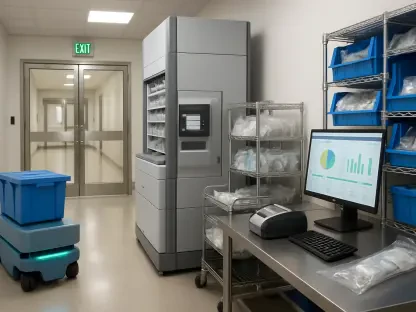In an era where digital communication has transformed healthcare delivery, a significant legal battle is unfolding in California over telehealth laws that critics argue infringe on fundamental constitutional rights, sparking intense debate. These regulations, designed to govern medical practice across state lines, have stirred controversy by prohibiting out-of-state doctors, even those licensed elsewhere, from engaging in remote consultations with California patients. The crux of the debate lies in whether such restrictions constitute a legitimate regulation of professional conduct or an unlawful suppression of free speech under the First Amendment. This issue has far-reaching implications, not only for healthcare access but also for the broader interpretation of constitutional protections in the digital age. As telehealth continues to bridge geographical gaps, the outcome of this challenge could redefine how states balance regulatory authority with individual liberties, setting a precedent for the intersection of technology and free expression.
Legal Battle Over Speech and Regulation
The contention surrounding California’s telehealth licensing laws centers on their broad and ambiguous scope, which critics argue directly targets speech rather than actionable medical conduct. These laws criminalize discussions about symptoms, diagnoses, or recovery between out-of-state doctors and California patients unless the physician holds a state-specific license. Such restrictions have led to a lawsuit against the California Medical Board, spearheaded by individuals like Dr. Sean McBride, a New York-licensed oncologist, who seeks to consult remotely with patients before and after in-person treatments. The plaintiffs assert that these rules prevent essential doctor-patient communication, chilling free expression under the guise of regulation. This legal challenge highlights a critical tension: while states have an interest in overseeing medical standards, the prohibition of mere conversation raises questions about overreach and the erosion of constitutional safeguards in a rapidly evolving healthcare landscape.
A deeper examination of the case reveals how the state’s definition of “unauthorized practice” of medicine extends beyond tangible actions like prescribing medication to encompass private dialogue. This expansive interpretation, as seen in the initial federal trial court ruling favoring the California Medical Board, suggests that even discussing medical information remotely falls under regulated conduct rather than protected speech. However, this decision is currently under appeal in the Ninth Circuit, where the distinction between speech and conduct remains a pivotal issue. Legal experts and advocates argue that if upheld, such a precedent could embolden other states to impose similar restrictions, potentially stifling telehealth innovations. The ongoing litigation underscores a broader debate about whether government bodies can justify curtailing communication as a means of protecting public welfare, especially when access to specialized care is at stake for many patients across California.
Historical Precedents and Judicial Trends
Judicial history offers significant insight into the current challenge against California’s telehealth laws, with several landmark cases reinforcing the protection of speech in professional contexts. For instance, the U.S. Supreme Court’s ruling in NAACP v. Button (1963) struck down a Virginia law that labeled civil rights advocacy as improper solicitation, affirming that speech cannot be suppressed under vague regulatory pretexts. Similarly, a more recent Fifth Circuit decision invalidated a Texas law restricting veterinarians’ virtual consultations, recognizing it as a direct regulation of expression rather than conduct. These precedents collectively signal a judicial consensus that attempts to reframe speech as actionable behavior often violate First Amendment rights. As California’s case progresses, these historical rulings provide a robust framework for challenging laws that blur the line between communication and professional practice, emphasizing the need to prioritize constitutional protections.
Further analysis of legal trends reveals a consistent pushback against state overreach in regulating professional speech, as evidenced by the Supreme Court’s decision in NIFLA v. Becerra (2018). In that case, a California law mandating specific disclosures by pro-life clinics was overturned, with the court rejecting the state’s claim that it regulated conduct rather than expression. This ruling, alongside others, underscores the judiciary’s growing skepticism toward broad regulatory claims that encroach on free speech. In the context of telehealth, these decisions suggest that California’s licensing regime may face significant scrutiny in appellate courts, particularly given its impact on private, personalized conversations between doctors and patients. The evolving legal landscape indicates a pressing need for precision in lawmaking, ensuring that regulations target specific medical actions rather than broadly restricting dialogue, thereby safeguarding both healthcare access and fundamental rights.
Impact on Patients and Healthcare Access
The practical consequences of California’s telehealth restrictions are starkly evident in the experiences of patients like Shellye Horowitz, who resides in a rural part of the state and faces a grueling 14-hour round-trip journey to consult specialists in Oregon. Such barriers to care are exacerbated by laws that prevent remote consultations with out-of-state doctors, effectively limiting access to specialized medical expertise for those who cannot travel long distances. This situation illustrates how regulatory overreach not only infringes on speech but also creates tangible hardships for individuals with rare or complex conditions. The inability to engage in virtual discussions with trusted physicians forces patients into costly and time-consuming travel, often delaying critical care. As telehealth becomes an indispensable tool for bridging geographical divides, these laws raise urgent questions about equity in healthcare delivery across state boundaries.
Equally concerning is the effect on medical professionals who fear criminal penalties for engaging in remote consultations, as seen in Dr. McBride’s reluctance to provide follow-up care to California patients. This self-censorship, driven by the threat of legal repercussions, stifles the potential of telehealth to offer continuous, personalized support to those in need. Beyond individual cases, the broader implication is a chilling effect on the medical community, where innovation and collaboration across state lines are hindered by outdated regulatory frameworks. The ongoing lawsuit seeks to address these challenges by advocating for a legal distinction between speech and conduct, arguing that private conversations should not be subject to the same oversight as physical medical interventions. As this issue unfolds, it becomes clear that resolving these restrictions is essential to ensuring that technology can fulfill its promise of making healthcare more accessible and responsive to diverse patient needs.
Path Forward for Telehealth Regulation
Reflecting on the legal and practical challenges posed by California’s telehealth laws, it becomes evident that a critical balance must be struck between state oversight and constitutional freedoms. The lawsuits and appeals, particularly the pivotal case in the Ninth Circuit, underscore the urgency of reevaluating how regulations are applied to digital healthcare platforms. Past judicial rulings provide a clear warning against conflating speech with conduct, urging lawmakers to craft precise policies that target specific medical actions without infringing on communication. The struggles of patients and doctors alike highlight the real-world consequences of restrictive laws, pushing the conversation toward a more nuanced regulatory approach that prioritizes access and equity.
Looking ahead, the resolution of these legal battles offers an opportunity to redefine telehealth governance in a way that upholds First Amendment protections while addressing legitimate public safety concerns. Policymakers should consider frameworks that allow for cross-state collaboration among licensed professionals, perhaps through reciprocal agreements or federal guidelines that standardize telehealth practices. Additionally, leveraging technology to create secure, verifiable platforms for remote consultations could mitigate risks without resorting to blanket prohibitions on speech. As the healthcare landscape continues to evolve, stakeholders must engage in dialogue to ensure that future regulations foster innovation rather than suppress it, ultimately paving the way for a system where patients and providers can communicate freely and effectively across state lines.









